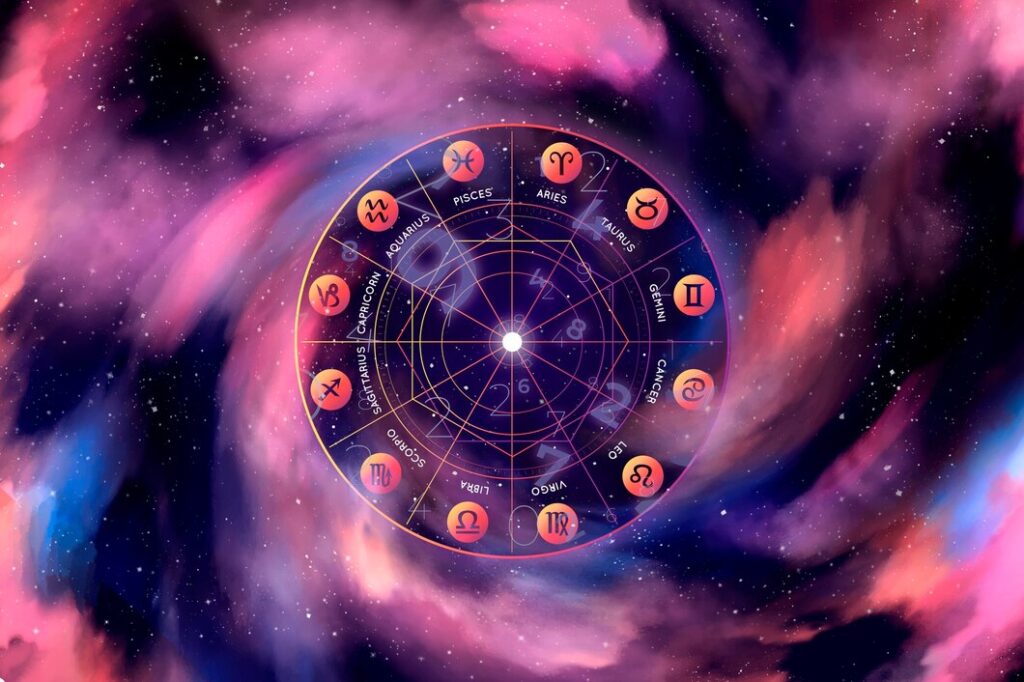How does Vedic astrology reveal the dynamics of our relationships with brothers and sisters? What astrological signature points towards innate courage, initiative, and the drive to make things happen? While the main birth chart (Rasi D1) provides a broad overview, the specific nuances related to siblings and personal enterprise are often found by examining a key divisional chart: the Drekkana chart D3. Understanding this Varga is essential for gaining deeper insights into these vital areas of life. This guide introduces the drekkana chart d3, explaining its significance in assessing sibling relationships and one’s inherent valour.
Astrological Yogas & Vargas: Layers of Meaning
Before focusing on the D3, let’s briefly recall the framework of Jyotish analysis. The Rasi chart (D1) lays out the foundational map, including planetary yogas or combinations in astrology that indicate major life potentials. However, the Divisional Charts (Vargas) provide crucial depth, revealing the underlying quality and specific manifestation of planets concerning different life domains. While the Navamsa (D9) illuminates marriage and dharma, the Drekkana (D3) shines a light specifically on siblings and self-driven efforts.
What is the Drekkana Chart (D3)? Siblings, Courage, and Initiative
(Opinion): The Drekkana Chart (D3) is a vital Varga chart in Vedic astrology, primarily used to analyze matters related to siblings (co-borns), courage, initiative, willpower, skills involving hands, short journeys, and aspects of vitality or life force. It provides a more detailed and nuanced perspective on the 3rd house significations seen broadly in the Rasi chart.
(Reason): Why is this specific division linked to these themes? The d3 chart vedic astrology uses is created by dividing each 30-degree zodiac sign into three equal segments (‘Drekkanas’) of 10 degrees each. There are 36 Drekkanas in total across the zodiac. The 3rd house in the Rasi chart is the primary house governing siblings, courage, communication, and personal efforts.
The D3 chart, being the 3rd harmonic chart, naturally resonates with and expands upon these 3rd house themes. By examining planetary placements within this finer division, astrologers can assess the quality, strength, and potential challenges related to one’s siblings and their own capacity for bravery and enterprise.
(Example): Consider Mars, the natural significator (Karaka) for younger siblings and courage, placed in the 3rd house in the Rasi chart. This looks promising. However, if Mars falls into a debilitated or enemy sign in the Drekkana chart (D3), it might indicate difficult relationships with siblings despite the favorable Rasi placement, or that the courage signified is somehow weakened or misused.
Conversely, a planet looking average in the Rasi chart might gain exceptional strength in the D3, revealing hidden reserves of courage or indicating very supportive sibling relationships. The D3 adds crucial detail to the drekkana siblings analysis.
(Opinion/Restatement): Therefore, the drekkana chart d3 is an essential tool for refining interpretations related to co-borns and personal drive. It moves beyond the general indications of the D1 to reveal the specific quality and operational strength concerning courage, initiative, and sibling dynamics. Mastering d3 interpretation is key for a comprehensive reading.

Drekkana Analysis: Calculation and Interpretive Principles
(Pattern Spotting): How is the Drekkana chart constructed, and how do we begin the drekkana analysis? The calculation involves assigning rulership to the three 10-degree segments within each sign.
The Calculation Rule (Parashara Method):
The most common method, attributed to Maharishi Parashara, assigns the three Drekkanas within a sign as follows:
- First Drekkana (0°00′ to 10°00′): Ruled by the lord of the sign itself. The Drekkana sign is the same as the Rasi sign.
- Second Drekkana (10°00′ to 20°00′): Ruled by the lord of the 5th sign counted from that sign. The Drekkana sign is the 5th sign from the Rasi sign.
- Third Drekkana (20°00′ to 30°00′): Ruled by the lord of the 9th sign counted from that sign. The Drekkana sign is the 9th sign from the Rasi sign.
(Note: Other calculation methods exist, like the Jagannath Drekkana, but the Parashara method is most widely used for analyzing siblings and courage).
How to Interpret Planetary Placements:
Astrology software calculates the D3 chart based on the precise degree of each planet in the Rasi chart. The analysis then focuses on:
- The D3 Lagna (Ascendant): The sign rising in the Drekkana chart provides insights into the native’s fundamental approach towards initiative, courage, and siblings.
- The D3 Lagna Lord: Its strength (dignity) and placement within the D3 chart indicate the overall capacity for courage, self-effort, and the general well-being related to 3rd house matters. Placement in benefic houses within D3 is favorable.
- The 3rd House and Lord in D3: This specifically refines the indications for younger siblings. Afflictions here can suggest difficulties with or for younger siblings.
- The 11th House and Lord in D3: The 11th house (being 9th from the 3rd) is often examined for elder siblings.
- Mars (Bhratru Karaka): As the natural significator for younger siblings and courage, Mars’s dignity and placement in the D3 chart are crucial. A strong Mars in D3 enhances courage and supports sibling relationships. Affliction indicates potential conflicts or lack of valor.
- Jupiter: Sometimes considered a significator for elder siblings. Its condition in D3 can offer clues.
- Placement of Rasi 3rd Lord in D3: Where does the planet ruling the 3rd house in your main birth chart (D1) fall within the D3 chart? Its strength and placement in the D3 further qualify sibling matters and personal drive.
- Planets in the D3: Benefics (Jupiter, Venus, Moon, Mercury) generally indicate more harmonious sibling relationships and positive expression of courage. Malefics (Saturn, Mars, Sun, Rahu, Ketu) can indicate challenges, conflicts, separation from siblings, or courage expressed in difficult/aggressive ways, depending on their strength and placement.
D3 Interpretation: What the Drekkana Reveals
(Value): Summarizing the key insights gained from the d3 interpretation:
- Nature of Sibling Relationships: Are relationships likely to be supportive, harmonious, conflict-ridden, distant? Are siblings likely to be successful or face challenges? (Note: Predicting exact number/gender is highly complex and less reliable than assessing the quality of relationships).
- Level of Courage and Initiative: Does the person possess innate bravery, enterprise, and the willpower to pursue their goals? Or are they more hesitant or lacking in drive?
- Skills and Talents: Particularly those related to hands (writing, arts, crafts, music), communication, and short-distance travel.
- Life Force and Vitality: The D3 can offer clues about overall energy levels and resilience.
- Potential Health Issues: Specifically related to the neck, shoulders, arms, and respiratory system (areas linked to the 3rd house).
Mythbusting: Common Errors in Drekkana Analysis
(Engagement): While the drekkana chart d3 provides valuable insights, its interpretation requires care and context. Here are crucial points and common pitfalls to avoid:
- The Rasi Chart (D1) is Primary: This cannot be overstressed. The Drekkana refines the picture painted by the main birth chart; it does not replace it. Strong indications for siblings or courage must first be seen in the D1 (e.g., a strong 3rd house/lord, strong Mars). The D3 tells you the quality and nuance of that Rasi promise. A terrible D1 for siblings cannot be completely ‘fixed’ by a good D3, though a good D3 can show inner strength or supportive dynamics despite outer challenges.
- Birth Time Accuracy: While the D3 segments (10 degrees) are larger than those for Navamsa (3°20′), meaning the D3 Lagna changes less frequently (roughly every 40 minutes), accuracy still matters. An error can shift the D3 Lagna and house placements, altering the interpretation. While slightly more robust against minor errors than D9/D10, significant birth time uncertainty limits reliable D3 analysis.
- Predicting Sibling Number/Gender: Classical texts offer complex rules for predicting the number and gender of siblings based on the D3, often involving counting planets in certain houses or signs. However, in practice, these rules are notoriously unreliable due to factors like multiple births, non-biological siblings, miscarriages, etc. It is generally more fruitful to use the D3 to assess the nature and quality of sibling relationships rather than exact numbers.
- Different Drekkana Calculations: Be aware that different schools of thought use slightly different methods for calculating the Drekkanas (e.g., Parashara, Jagannath, Somanatha). The Parashara method described above is the most common for analyzing siblings and courage. Ensure your software uses the method appropriate for your query.
- Holistic Synthesis: The d3 chart vedic astrology uses is just one lens. Its indications must be integrated with the D1, the crucial D9 (Navamsa) for overall quality, relevant planetary Karakas (Mars, Jupiter), and the timing shown by the Dasha system. For instance, challenges with siblings might only surface during the Dasha period of an afflicted planet in the D3 or the Rasi 3rd lord.
Conclusion: Insights into Siblings and Self-Effort
The Drekkana Chart (D3) is an invaluable divisional chart in Vedic astrology, offering a focused and detailed perspective on the dynamics of sibling relationships, personal courage, initiative, and skills related to the 3rd house. By mathematically dividing each sign into three, it allows for a nuanced d3 interpretation that refines the broader indications seen in the main Rasi chart.
While understanding drekkana siblings is a primary use, the D3’s insights into one’s innate drive, willpower, and capacity for self-effort are equally profound. However, effective drekkana analysis requires acknowledging its place within the larger astrological framework.
It must be synthesized with the foundational Rasi chart, the crucial Navamsa chart, and the timing of Dasha periods. When used correctly and with accurate birth time, the D3 chart provides essential keys to understanding the intricate threads connecting us to our co-borns and the wellspring of our own inner courage.












